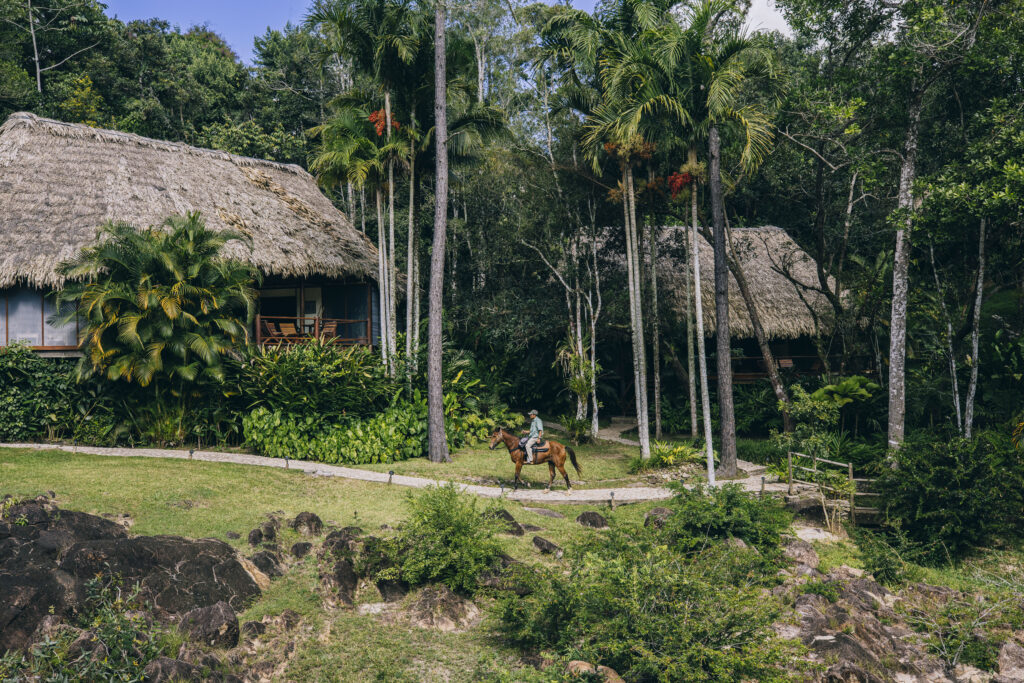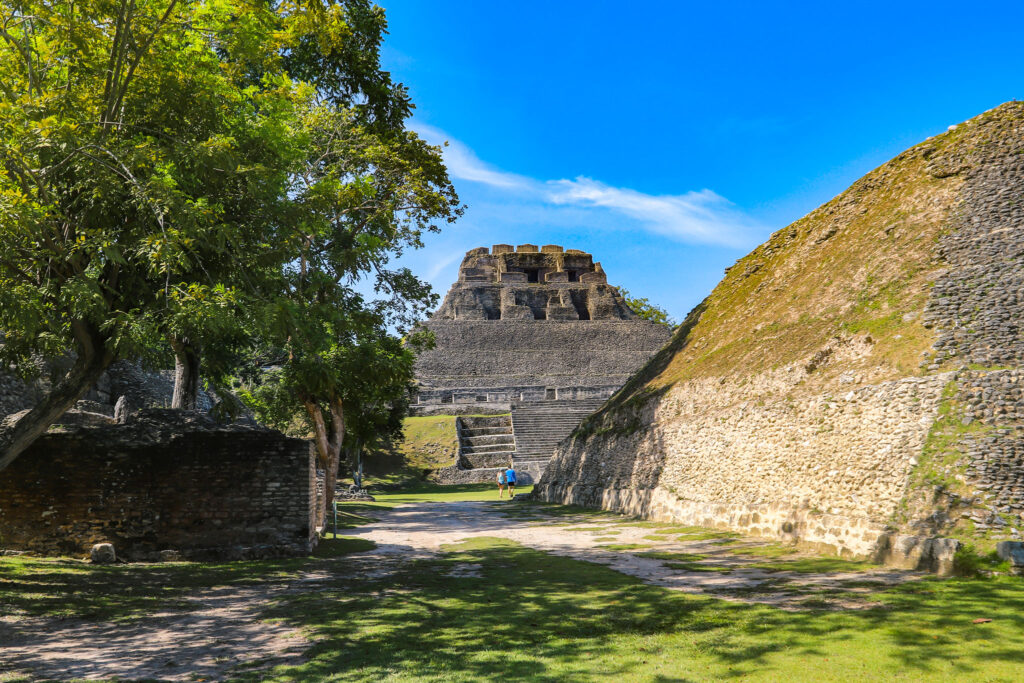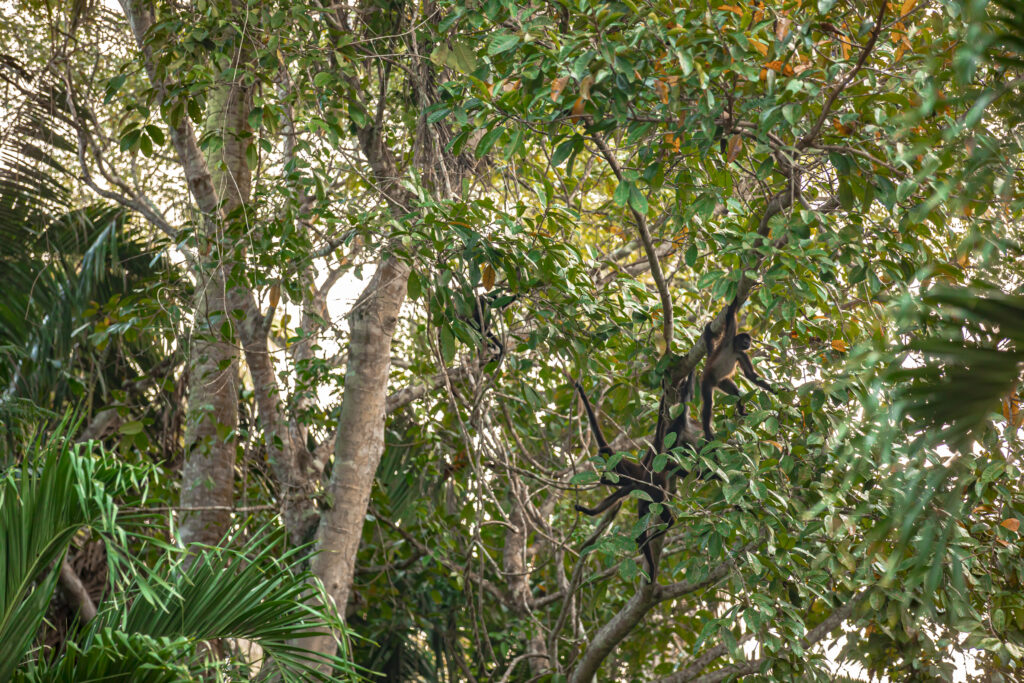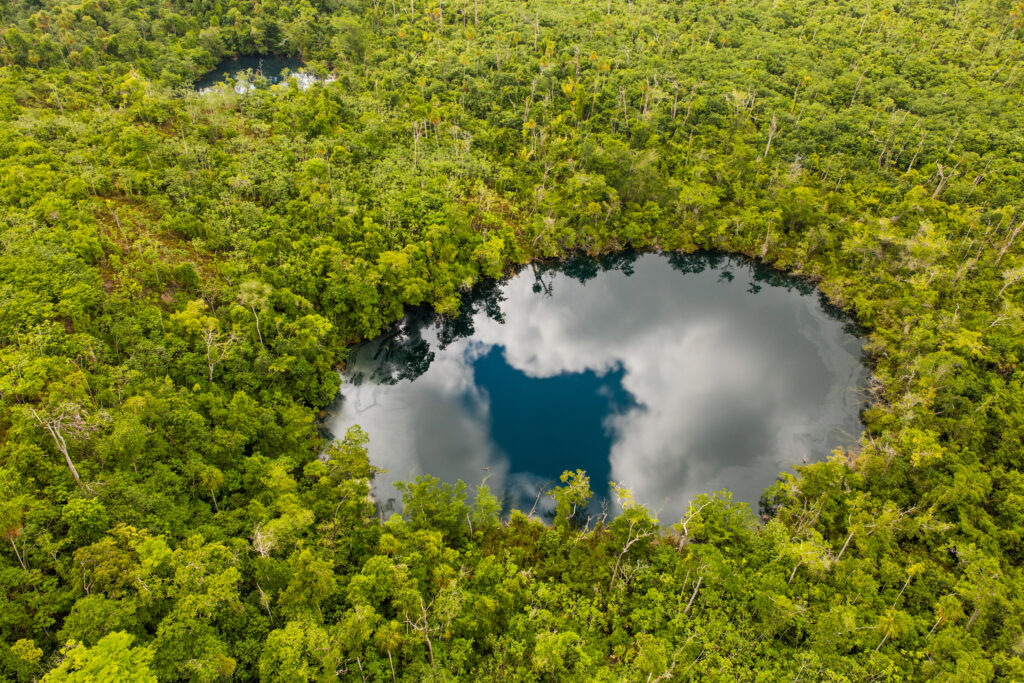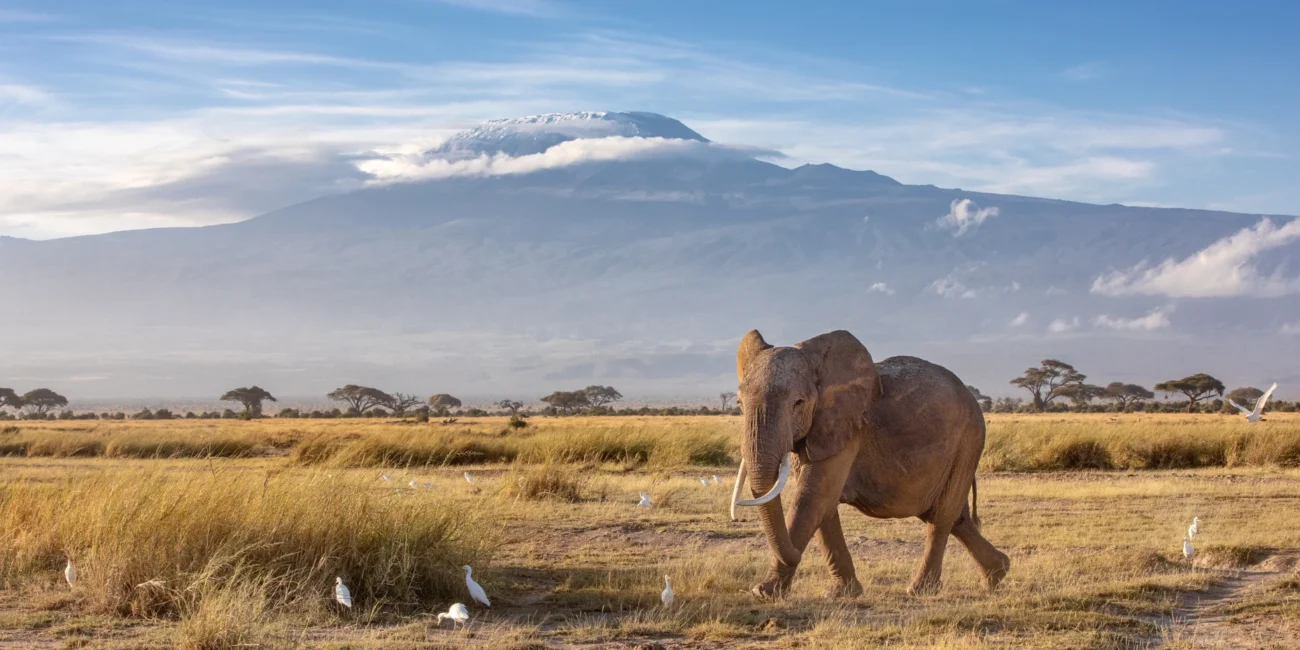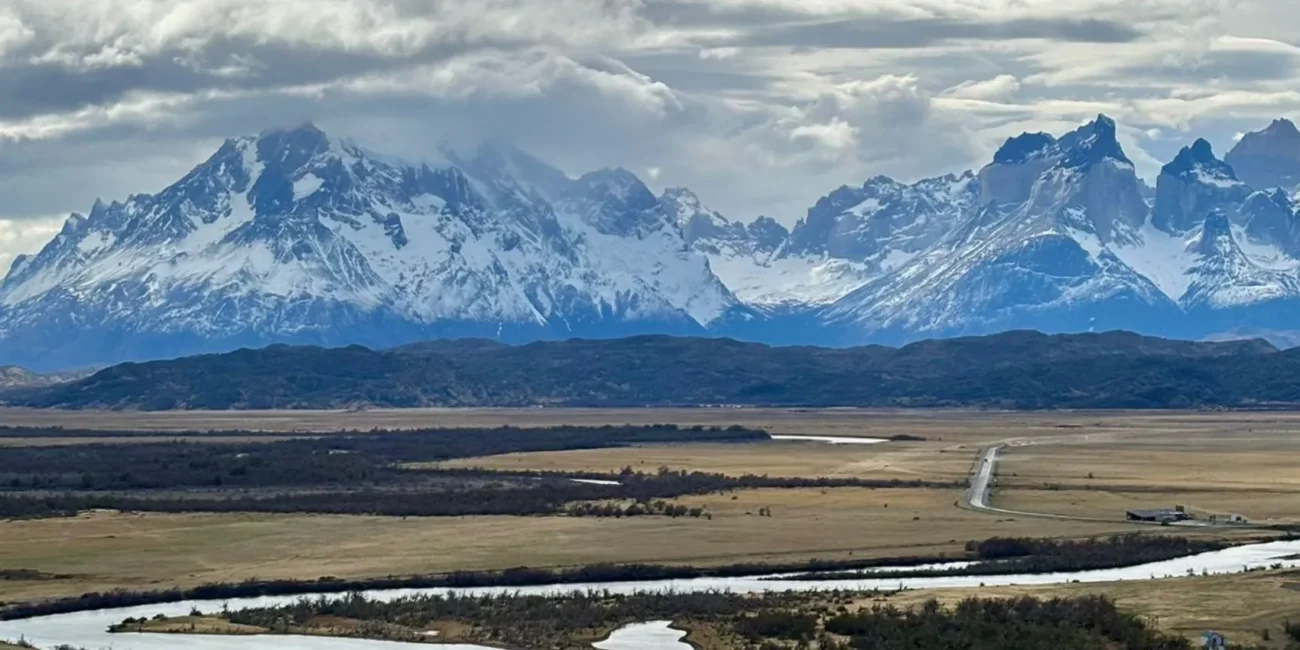In 2025, we will host a small group of 8 guests in Belize to engage with the nation’s pioneering NGOs, discovering the nation’s vast ecological wealth and character of environmental stewardship.
The journey will be personally hosted by Roni Martinez, one of Belize’s top nature guides, and Paul Lister, founder of The European Nature Trust.
Ahead of the journey, Ross Westgate, journalist and Ambassador to The European Nature Trust, spoke with Paul and Elma Kay, Director of Belize Maya Forest Trust, to learn more about Belize’s conservation efforts and what guests can hope to gain from their visit next year. Here are some things we learned from their inspirational Fireside Chat.
Photo credit: Blancaneaux Lodge
It’s important to feel dwarfed by nature
Speaking about one of the lightbulb moments that struck Paul’s lifelong interest in Belize, he shares the wonder he felt at the vastness of nature and why he thinks it’s so important to experience nature’s magnitude.
“Chris took us to meet Rafael [Executive Director of Friends for Conservation and Development] in Las Cuevas, which is part of the trip itinerary with Journeys With Purpose, and we stayed at the research station there. There’s a beautiful bird tower on top of this hill overlooking the incredible forests that lie between Guatemala and the sea, and I remember going up there and seeing the immense enormity of this ocean of trees. I saw all the lush vegetation and I thought to myself “my God, these are the lungs of the earth!” and I fell in love with the natural beauty and incredible nature of the country there and then.
That was a really powerful moment for me and I think it would have brought a lot of people to tears. When you stand in a place like that, it creates an emotion and really makes you connect and think “wow, there’s something far greater than humankind in this natural world. Experiencing nature’s vastness is very special, and even more so in Belize, where 80% of the country is undeveloped.”
Photo credit: Blancaneaux Lodge
It’s possible to see jaguar everywhere in Belize, but in Belize Maya Forest, it’s probable
Explaining Belize Maya Forest Trust’s work and the protected areas they preserve Elma Kay observed how your best chances of spotting jaguar in Belize may likely be within Belize Maya Forest, where our guests will spend the first two nights of their itinerary.
“Your opportunity to spot jaguar will be when you are with us in Belize Maya Forest and in the private Gallon Jug area. Between the Rio Bravo, Belize Maya Forest and the small private forest of Gallon Jug estate, we consolidate half a million acres of protected forest in the northwest, and this is one of the areas where I can safely say that you’re likely to see a jaguar. I don’t think there’s many places even in the rest of Belize where you can say that, even though it’s possible.
We know jaguars are there but they’re elusive. In our space, because of the level of protection of the area, I would say they’re a lot more visible.”
Photo credit: Blancaneaux Lodge
Ecotourism connects visitors to Belize’s conservation mission
The last tourism master plan developed for Belize looked at focusing on overnight and ecotourism.
“It’s the type of tourism that gives back to the country and it’s the type of tourism we want to encourage. The more visitors are exposed, the more they’ll gain a deeper understanding of Belize’s conservation, our goals and sustainable development needs. We definitely want more of these tourists. We want people to connect with us. We want people that are interested in what we have to offer as a country – our culture, our heritage, our people, and our biodiversity as well.”
Belizean conservation also protects its culture
There is a real mix of culture and cuisine in Belize, and of people’s heritage. Extraordinary ancient Mayan ruins and amazing temples are just sitting in the middle of the jungle, waiting to be explored.
“The conservation work we’re doing is also work to preserve our cultural heritage. It’s amazing in the Belize Maya Forest; there is so much to be studied and potentially excavated and looked at. It just blows my mind. Saving 136,000 acres with Belize Maya Forest isn’t just saving the trees and wildlife, it is saving the part of our heritage that we need to understand.
But I don’t think we often see these two parts as connected. We see saving archaeology as its own thing and saving wildlife as another, but we need to remember that this was a landscape that the Mayans were all over. I would say most of us still have that indigenous part of us and of course we still have Maya villages that live within the traditional ways. These exist alongside other indigenous communities, our creole population, and just about everything else you can think of.
Belize is very, very diverse. It’s a fascinating part of our culture that we’re extremely proud of in terms of being able to live together.”
Belize will give you hope
“Everything we do is about giving a sense of inspiration and hopefulness that some of the work we are doing here can be done in your own backyard. We want people to go home and also be inspired to conserve what’s wild – because what’s wild is good for humanity.
Obviously we want people to fall in love with Belize and to potentially stay in touch with us and connect us to others who want to be in touch with Belize, but beyond that we want to demonstrate which things are working well and the level of support and investment that is allowing us to scale up these initiatives.
There are a lot of reasons to not have hope with global climate change issues, and so many things make us feel that we don’t have the power to implement change. But I think when people visit Belize and see how much we are doing and are able to achieve, and the opportunity to do more, people will leave with a sense of hope that will translate into some of the actions they take in their own backyards.”
To learn more about our Journey to Belize, get in touch with our team at connect@stg-journeyswithpurposeorg-staging.kinsta.cloud.
